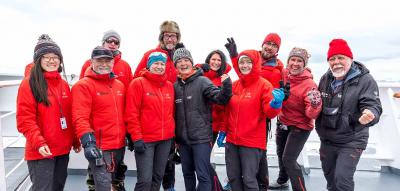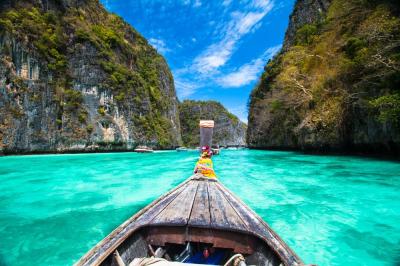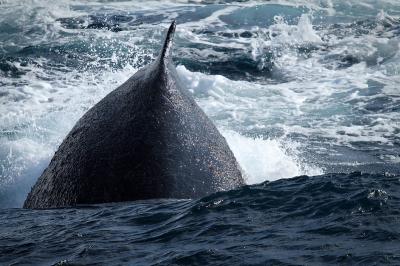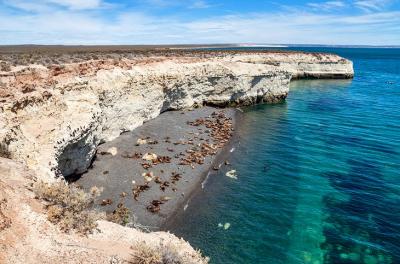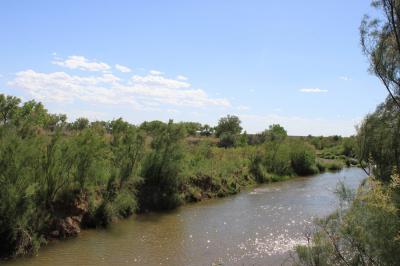Welcome to Iceland
Glima, which was previously an Olympic sport, involves grabbing your opponent’s belt and throwing it. It is Iceland’s own wrestling style while football has a popular and devoted following. The Stoke City Club in the UK was owned by an Icelandic consortium from 1999 to 2006 and the Reykjavik Football Club has existed since 1899. However, most people only go outdoors to enjoy nature or to work.
Iceland has some of the most varied scenery on offer with lava plains, black-sand deserts, snow-capped plateau, elevated meadows, intricate fjords and unpredictable volcanoes. The opportunities for outdoor ventures are great and extremely popular. The activities range from hiking and skiing to snowmobiling and cross-country four-wheel-driving. The local tourist offices always have details about the opportunities available while the Department of Forestryand Icelandic hiking organizations have details for the national parks and reserves. Most of these activities can be done as organized tours with the required gear either provided or offered for rent. Again, take out good insurance coverage before doing risky adventure sports.
Unusually, swimming is a favourite and year-round social activity among Icelanders. As such, swimming pools, that are generally outdoor and heated at the nearest hot springs, are available in most townsand villages; they offer a good opportunity to meet new people and to unwind. Hot pots (spa baths), with temperatures of 35–40˚C, are a fantastic Icelandic institution in winter after swimming as you soak in hot water with snow falling around you. Also you can relax in the numerous natural hot springs after a long trail trek. However, be prepared to shower before swimming as it is required at official pools. Also, while men and women have separate changing rooms there, there are no separate cubicles within each changing room.
Since some of the best fishing grounds are found in the North Atlantic that surrounds Iceland, sea fishing tends to be a career rather than a hobby. Similarly, salmon and trout are abundant in the country’s lakes and rivers; this attracts multitudes of fly fishers during the fishing season from April to September for trout and from June to mid-September for salmon. The finest salmon is found in the Laxá in the northeast and in the Rangá in the south. Ice-fishing, the arctic char, is a favourite winter activity - Þingvallavatn and Mývatn are the best spots for this.
For char and trout fishing, the permits are cheap and can be bought anytime at a local tourist office. However, the permit for salmon fishing is expensive since limits are placed on each river; it also has to be reserved a year in advance.
Hiking is the best way to explore the beautiful scenery. Although the reserves and parks have some marked trails, guideposts are often erratic so it’s essential to be competent in reading maps and using navigational aids – especially in poor weather. Also, make sure to take warm clothing that is waterproof, food, water, a flashlight, lighter, penknife, foil insulation blanket, a whistle or mirror for attracting attention and a first aid kit. Sturdy, high quality hiking boots are also essential for navigating the jagged rocks and rough surface that is the Icelandic terrain. However, thick-soled neoprene surf boots are useful when fording rivers.
Iceland is also famous for its breathtaking volcanic scenery. However, pay attention to volcanic fissures as they can be as small as a few inches or several metres wide. When visible, they’re easy to avoid, but when hiking in snow, it’s essential to test your path with a hiking pole as these fissures become invisible when blanketed by the snow.
Similarly, river crossings are a necessary part of many hiking trails in Iceland and they can be dangerous. Rivers are lowest in the early morning but rise quickly as glacial ice and snow melts in the sun and flows into the rivers. Remember that the widest part of a river is also its shallowest, which makes it the best (and safest) part to cross. Before crossing, your backpack should be loosely strapped in case you need to get rid of it while crossing. Face the current as you cross and retreat if the water goes above your thighs. Also, it’s essential to remember that some rivers have no safe fords and never, in any situation, attempt to cross a river alone.
The best time for hiking is June to August when the wild flowers are in bloom, the weather is warmer and the wildlife is more visible; however, there might be lingering snow on higher ground. Outside of these months, it can be difficult to explore certain areas due to the weather. However, you can walk almost anywhere in Iceland, and there are many highlights to look out for, such as the Reykjanes Peninsula, near Reykjavik, that offers treks across lava rubble. In addition, shorter and easier hikes in breathtaking valleys near Hveragerðiare are available, while the trails of Þingvellirhave possess historic sites and a good introduction to the geology of rift valleys. Further east, Laugavegur is an unforgettable four-day trail. One of Iceland’s most-loved spots for hiking is Þórsmörk with its wooded valley and surrounding peaks, connected paths and glaciers.
The Snæfellsnes Peninsula on the west coast is damp but peaks with the summit of the icy, dormant volcano of Snæfellsjökull. In the north, Hornstrandir is the most isolated and rural of the West Fjords, cliffs and rugged walks. If you’re looking for something less strenuous, the low northeastern lake of Mývatnis is good with easy day hikes to extinct craters with steaming lava flows. Longer but well-posted riverside trails are available around Jökulsárgljúfur National Park, which is worth the trip for the incredible view of the canyon. In the east, take a trip to the Vatnajökull ice cap that consists of Snæfell, the Lónsöræfi reserve near Höfn, and Skaftafell National Park, where a favourite spot for camping is located on the southern edge of Vatnajökull.
As a result of an import ban in the 10th-century, horses, that originally came to the country with the first settlers, have remained pure to their original Scandinavian breed. Considered to be of religious importance for Vikings, that included dedications and sacrifices to the pagan gods, horses have always been used for riding. The consumption of horse meat was banned with the introduction of Christianity, when it came to be viewed as a pagan symbol. However, horses are now used for recreation and rounding-up the autumn livestock. These horses are sturdy and easy-going and use a gliding gait to move smoothly over rough terrain. Although you can hire horses from most farms, the south part of the country has the largest breeding centres.
In Iceland, snow sports are not limited to the winter but have only recently gained popularity. Mostly, this is due to the majority of the population living in the country’s southwest corner where temperatures are the mildest. However, it is also partly because of the traditional view that snow was something to tolerate rather than enjoy. For example, cross-country skiing is part of daily life in the northeast of the country and is referred to as walking by the locals.
The advantage to the abundant snow is that you can do cross-country skiing almost anywhere and throughout the year, but you will need to bring your own gear. Downhill skiing and snowboarding are the favourite snow sports; just 20km from Reykjavik, Bláfjöll is a great choice of winter slopes.
Tour operators also offer glacier trips on snowmobiles or skidoos, that are like snow jet skis; it’s the only way to see the enormous ice fields of Iceland for inexperienced visitors and a lot of fun! Iceland also has excellent potential for scuba diving while whitewater rafting enthusiasts have recently discovered the larger rivers in the country’s southwest regions.

